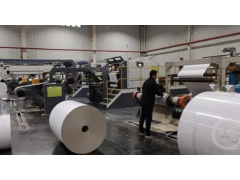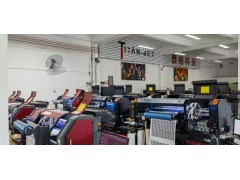News:Walking into the production workshop of Mudanjiang Hengfeng Paper Co., Ltd. (hereinafter referred to as "Hengfeng Paper"), the machines roared and blue and white reflected each other. Blue is the automated paper-making machine, and white is the rapidly rotating white paper. There is not a drop of pulp in the entire production process. Hengfeng Paper, a long-established state-owned enterprise with a history of 71 years, is the first domestic key high-tech enterprise in the paper industry recognized by the Ministry of Science and Technology and the Chinese Academy of Sciences. Currently, there are 21 machine-made paper production lines with an annual production capacity of 230,000 tons. They mainly produce ten series of products such as various types of cigarette paper, thin printing paper, household paper, and food packaging paper. This year, Hengfeng Paper developed a 19-gram thin printing paper, the world’s thinnest printing paper, and achieved mass production. The basis weight of ordinary thin printing paper is between 28 grams and 45 grams per square meter, while this ultra-thin paper is only 19 grams per square meter. How thin is it? The thickness of cicada wings ranges from 0.2 mm to 0.35 mm. The thickness of a single page of 19g thin printing paper is only 0.025 mm. For example, for a 2,000-page book, using ordinary paper, the thickness of the entire book will be more than 7 centimeters. If this kind of paper is used, the thickness will be about 2 centimeters. The paper becomes thinner, the pulp usage is reduced, the wood loss is reduced, and it is more green and environmentally friendly. Currently, this product is used in the printing of dictionary books in the Palace Museum and some foreign books. In 2021, Hengfeng Paper successfully developed 22-gram thin printing paper. Now it is developing new products to reduce the paper weight from the original 22 grams to 19 grams, and the difficulty has been upgraded again. So how is printing paper as thin as a cicada made? Thinking back to the cicada wings, thinness is accompanied by fragility and transparency at the same time. The 19g thin printing paper is only 0.025 mm thick. To be used for double-sided multi-color printing, it must have the characteristics of toughness and non-printing. The key to paper having these properties lies in the papermaking process. Papermaking is mainly divided into pulping and papermaking processes. Beating is to break up the wood raw materials and disperse them evenly into water; papermaking is to dehydrate and dry the processed slurry to make paper. The R&D team conducted repeated experiments in the pulping and papermaking processes, used modern instruments to analyze the chemistry, elements, and morphology of the paper, formulated plans multiple times, and determined the process. "The product is relatively thin and the opacity is difficult to achieve. We tried to add a dye to dye the paper slightly blue, and the opacity will be better." Liang Jie, chief engineer of Mudanjiang Hengfeng Paper Co., Ltd. explain. Then the product entered the fully automated production line and encountered unexpected problems. Due to the fast production speed of machine-made paper, thinner paper often breaks when passing through the automatic wheel and cannot enter the production process. "We repeatedly made some process adjustments, and the workshop equipment also made corresponding adjustments. After three attempts on the machine, the final product was successfully produced," Liang Jie said. After a year of unremitting efforts, the 19-gram thin printing paper was successfully developed. Now the product has traveled across the ocean and gone to the world, representing the professional level of Chinese papermaking. On the road of technological innovation, Hengfeng Paper continues to break through barriers and move forward. Since 2003, Hengfeng Paper has undertaken more than 20 national, Heilongjiang provincial and municipal science and technology projects, 13 new products such as "MHF cigarette paper" have passed Heilongjiang provincial appraisal, and participated in the formulation and revision of 14 national or industry standards. , won 9 provincial and ministerial science and technology awards and new product awards, 10 provincial scientific and technological achievements, and 99 authorized patents. "In the past, customers made demands and companies passively researched and developed. Now we are gradually turning to lead customers through our research and development capabilities. only with strong research and development capabilities can we ensure that product quality will always be ahead of the market," Liang Jie said. Time witnesses every step of exploration and leap in papermaking technology. Hengfeng Paper uses technology to build high points in the industry, constantly broadens its own exploration boundaries, and provides a powerful engine for development through refined technology.
- 卖家服务
- For Buyers
- Help
-
Mobile

H5 Mobile
Faster mobile access

WeChat official account
Mobile phone sign in to win points

WeChat applet
Play with new mobile marketing
- English




